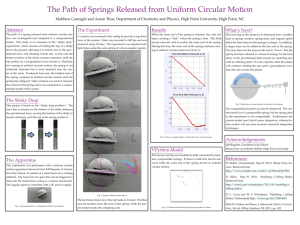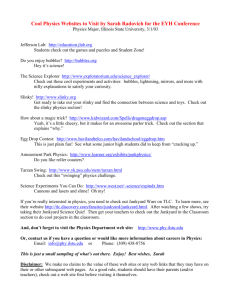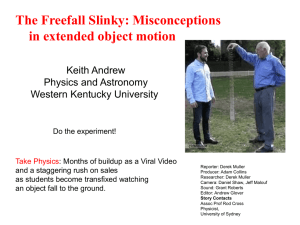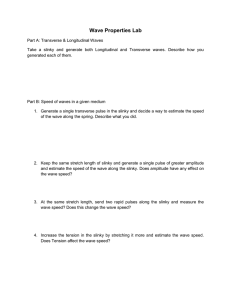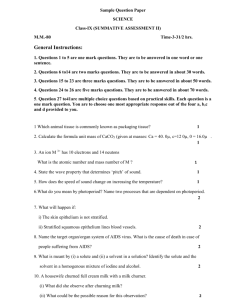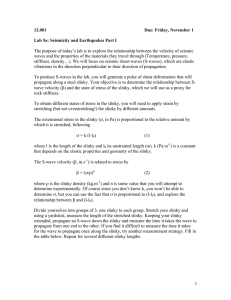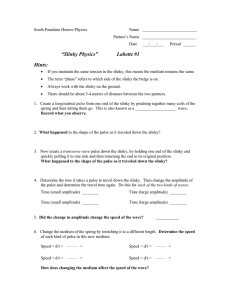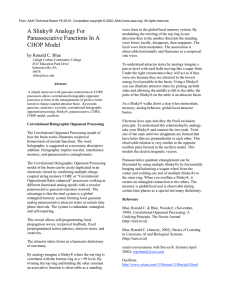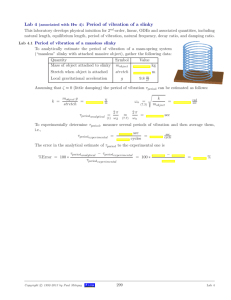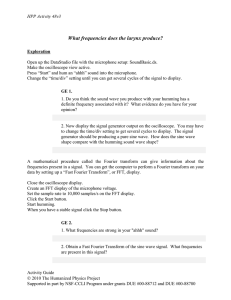PH 425 MJM Three possible slinky experiments
advertisement
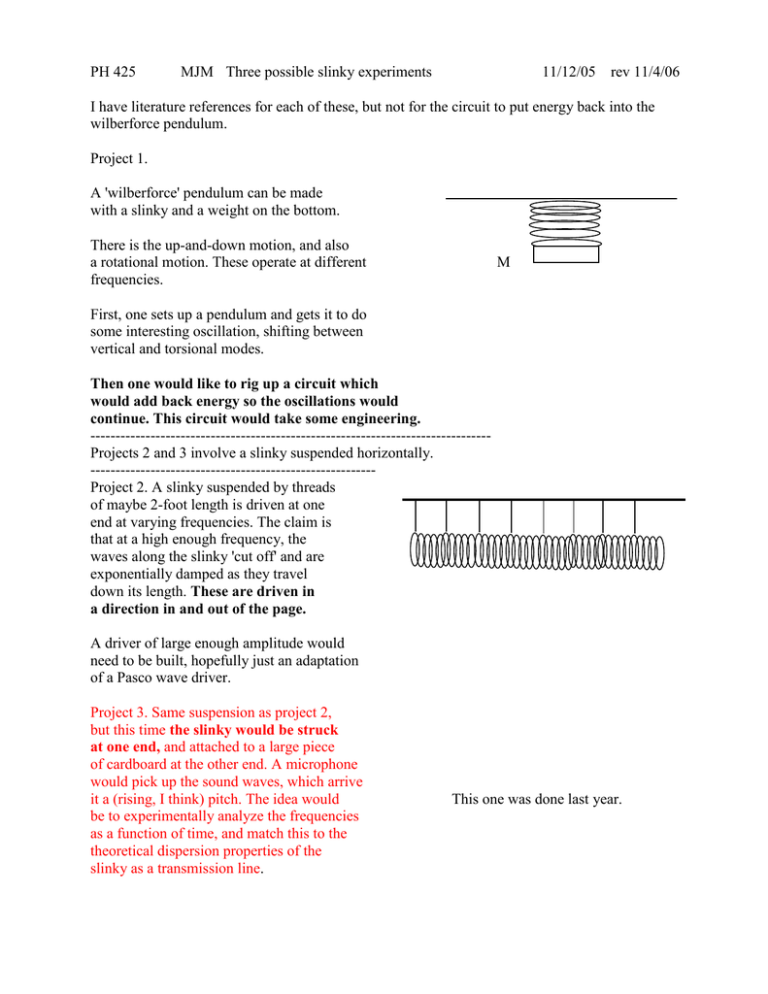
PH 425 MJM Three possible slinky experiments 11/12/05 rev 11/4/06 I have literature references for each of these, but not for the circuit to put energy back into the wilberforce pendulum. Project 1. A 'wilberforce' pendulum can be made with a slinky and a weight on the bottom. There is the up-and-down motion, and also a rotational motion. These operate at different frequencies. M First, one sets up a pendulum and gets it to do some interesting oscillation, shifting between vertical and torsional modes. Then one would like to rig up a circuit which would add back energy so the oscillations would continue. This circuit would take some engineering. -------------------------------------------------------------------------------Projects 2 and 3 involve a slinky suspended horizontally. --------------------------------------------------------Project 2. A slinky suspended by threads of maybe 2-foot length is driven at one end at varying frequencies. The claim is that at a high enough frequency, the waves along the slinky 'cut off' and are exponentially damped as they travel down its length. These are driven in a direction in and out of the page. A driver of large enough amplitude would need to be built, hopefully just an adaptation of a Pasco wave driver. Project 3. Same suspension as project 2, but this time the slinky would be struck at one end, and attached to a large piece of cardboard at the other end. A microphone would pick up the sound waves, which arrive it a (rising, I think) pitch. The idea would be to experimentally analyze the frequencies as a function of time, and match this to the theoretical dispersion properties of the slinky as a transmission line. This one was done last year. Project 4. A paper describes the stiffness parameters of a slinky in terms of the specific construction parameters thickness and pitch, and material of construction. One would hang a slinky with various weights to experimentally determine the stiffness parameters, and compare to the calculated ] ones. (One assumes metal ones are made of steel, but maybe not. One would have to establish the actual material of a given slinky.)
